Hybrid Lounge, City’s Newest Gay Bar
In a building whose history goes back to 1890, it attracts a hybrid of gay and straight folks.
Established in 2010, Hybrid Lounge is the newest — and perhaps last to ever open — of Milwaukee’s gay bars. The name itself alludes to the changes that have occurred in society and in the gay tavern business in recent years. It was not long ago that gay-friendly establishments (as we call them now) were generally concentrated in a small, then-unpopulated area of the city’s post-industrial near South Side.
Meanwhile, the target audience included a growing population in the Brady Street – East Side areas consisting of folks who perhaps did not care to travel a couple of miles for a congenial tavern. The nearest spot, the venerable This Is It, was still a good hike downtown.
The opportunity to open the Hybrid came for Nate Fried and Bill Lison with the closing of Dancing Ganesha Restaurant in 2007. It was located in an old building at the southeast corner of E. Brady and N. Van Buren streets at the foot of the Edward D. Holton Viaduct. To the south were Angelo’s and Libby’s, each of which had been in business for decades. Today, Libby’s is closed, replaced with Van Buren’s Whiskey Bar, and Angelo’s is being remodeled, and will reopen under the ownership of Fried, who has since bought out his partner.
Was Originally a Butcher Shop and Grocery Store
That makes the nearly six year old Hybrid — the newest gay bar in the city — the oldest bar on the block. Changing times in an ever-changing neighborhood, and in a society where a “gay bar” might some day be any bar.
Hybrid occupies two buildings as its cocktail campus. The older and larger of the two is the two-story corner structure at 707 E. Brady St. It was constructed in 1890 as a store at what had then been 846 Van Buren St. At that time, Brady and Van Buren was just another intersection on the lower east side. That was soon to change a couple of years later when the first Holton Viaduct spanned the Milwaukee River from its launching pad just to the north.
A June, 1894 Milwaukee Journal article looked forward to the opening of the new bridge, the completion of which was delayed by some months. “East side people in the vicinity think it will benefit them,” the article wrote, anticipating a “marked increase in business near the corner of Brady and Van Buren,” where Herman Gross ran his grocery store in the new building. Neighbors to the south, on the block the paper called “one of the most attractive bits of street in Milwaukee,” included such names as Bradley, Skinner, Watson, Martin and Fitzgerald.
In 1912 we find Paul Pietluch (if that’s how his name was spelled) running the place located in what had become by then a rather prominent and busy intersection, just as had been predicted nearly two decades before.
In 1921 the store was run by a fellow named Chas. Arnapaloky, or maybe Arnapolsky, or who knows what? (It’s a devil reading old handwritten city records.) Anyway, the butcher simply called his store “Charles Arnol Grocers,” and left it at that.
Chas. Arnol and his wife, Anna, ran the place and lived upstairs, as was customary with such mom-and-pop mercantile operations of the era. Toward the end of 1921 he took out a permit to tear down an old barn to the south and to erect a 28-foot by 52-foot garage at a cost of $2,700. The automobile age was soon to displace the horse-and-buggy era here, although thousands of horses were still stabled within the city limits, sometimes rather noxiously close to houses and grocery stores. The automotive use at the location was permitted according to the city’s first zoning code, enacted the year before. Meanwhile, the store on the corner kept butchering and producing.
On New Year’s Eve, 1930, a fire broke out in the building, and owner Josephine Bellanti was ordered to “replace girders wrecked in fire.” That was done by February, 1931. Apparently this grocery store was at least in part a legitimate enterprise during Prohibition, even though the neighborhood was active in the production of wine, mostly originating in the basements of the numerous Sicilians who had moved there from their homeland, after a stint in the Third Ward. Within a block were such families as the Balistrieris, the Aliotos, the Librizzis, and others, living next to each other on Brady Street. All had connections to the liquor business from the pre-Prohibition era.
Bradley, Skinner, Watson, Martin and Fitzgerald joined the North Shore diaspora as Mediterranean and Eastern European immigrants flooded the old neighborhood with their soft drinks and foreign tongues.
In 1936 Josephine Gaglione took out a permit to operate the former grocery store as a tavern, and she named the place the Transfer Inn, most likely in recognition of its role as a critical intersection in the city’s street railway systems. Trains ran east-west on Brady Street, and north-south across the current Holton Viaduct, constructed in 1926. The Transfer Inn would be a perfectly convenient spot to drink a beer and to sit and wait for the next street car, or the one after. Or the one after that.
In 1937 business was going nicely at the Transfer Inn, and a person the city identified as Nathan Criscimagna (Natale Criscimagna) took out a permit to convert the garage next door into a “Tavern Dance Hall.” Nate had to provide two arches to permit access between the two buildings, and also had to construct “2 new toilet rooms.” Eighty years later another Nate would be fated to run the place.
The dance hall was called “One Plus One,” and had a sparkly sign out front.
Criscimagna also got to work on the old grocery store, which had had its main entrance centered on Van Buren St. “Close up old entrance + cut in new entrance on corner,” the inspector noted, and the corner entrance remains a fixture of the building today, as well as giving it a coveted Brady Street address. The brickwork here dates to that remodeling. The remainder of the building is frame construction on a limestone foundation.
By 1955 the tavern was run by Joe Triscari, who took out a permit to install a suspended ceiling three feet below the original. Similar desecrations of interior space took place throughout the city at that time. Fortunately, this one has been erased by the current owner. Triscari hung a Blatz sign in the window in 1959, as the Brady Street neighborhood settled into its insularity before it was to be reborn as the center of Milwaukee’s counterculture in the next decade.
In 1966 the tavern was renamed the Brown Derby, and owner T. Ferrara took out a permit to re-side the front portion of the building with aluminum siding. The next year a Pabst sign replaced the Blatz sign. Then, in 1970, the Blatz sign was up again and the tavern had a new name and a new sign reading “Peacock Bar OPEN 6 AM.” The One Plus One continued as a dance hall. In 1968 an advertisement read “One Plus One = Fun” and touted the “Sensational Rock Group” called the “Milwaukee Gas Company,” which performed there as Brady Street entered the psychedelic era. Both taverns were permitted as “legal non-conforming continuous use” facilities.
Things were in considerable decline on the west end of Brady Street in the 1970’s. The neighborhood was still dominated by giant tanneries like Gallun and Pfister and Vogel. It smelled none too good right there by the river, which did not bother the hippies very much, since neither did they, as far as the old timers at the Peacock Bar were concerned.
By then the building was owned by Salvatore Ferrara, who had died by 1975 when his estate got a permit to open the One Plus One as a real estate office. One Plus One now equalled nothing.
In 1979 the Blatz sign was joined by a Heilman sign featuring Old Style, its sister beer. The drinkers at the Peacock Bar were none to fussy about their brews, as long as they were served by 6 a.m. In 1985 Trevor Hake took over the old Peacock Bar and its aging clientele. Somewhere around this time the magnificent, faded Peacock Bar mural on the north (Brady Street) wall of the building was obscured by the siding that remains to this day. The mural should still be beneath the tacky mustard-colored sheathing.
By 1989 things were changing on Brady Street, and the area’s resurgence, which continues today, came with a drink and a plate of food as the old commercial street became a nightlife and dining destination. Giovanni’s Restaurant, across N. Van Buren St. from the Peacock, was one of a number of Sicilian restaurants within a few blocks. Across E. Brady St. was Tarantino’s Beyond the Sea (now Casablanca), and a block to the east was Cataldo’s. They were joined by Carini and LoCoco’s Fish Market and Maiden Voyage restaurant where once the Peacock had strutted its stuff. All now gone.
Maiden Voyage did a fine job in its location, and with a considerable amount of renovations, the interior of the building took some of its current form. By 1995, the Voyage had sailed on to Menomonee Falls, and Rich Riojas tried running the old Peacock Bar as the City Grille, with a capacity of 99. That didn’t fly, and in 1997 the building became Dancing Ganesha, operated by Ashok Bedi and Usha Bedi, who bought the building for $350,000. It was a popular Indian restaurant, and was a favorite of Sen. Russ Feingold when he was in town.
A New Era
After 10 years, the Bedis quit the restaurant business, but held on to the property, and late in 2009 the space was leased to new operators who would operate it as the Hybrid.
Nate Fried, 38, is the soccer-playing owner of Hybrid. He and his former business partner both worked at LaCage, the queen of Milwaukee’s gay bars, when they decided to open their own place. Fried, who is straight, and Lison, who is gay, came naturally to the Hybrid concept, which essentially distilled a gay welcoming environment into the framework of a conventional Milwaukee neighborhood tavern.
For decor there was little need of Judy Garland and Cher posters — old photos of the Miller Brewery would do just fine. (The discerning visitor will note one apparently old photograph of a horse-drawn beer delivery wagon that is clearly not an old photograph, based on the glass-block fenestration of the building in the background.) The bar would also have television sets, tuned to sports games. It would serve free shots for Packers Touchdowns! The owners would save money and do a lot of the carpentry and painting themselves! Just like a straight Milwaukee bar.
Oh — and the drop ceiling and the plush carpeting simply had to go! Just like a gay Milwaukee bar. The bar runs along the windowless north wall of the tavern, where Brady Street pulses beyond unseen. Behind the bar is a mirrored back bar, well stocked with spirits. The tavern also has a number of tap beers, and a rather large full kitchen beyond. Seating includes backed, padded, swivelling stools at the bar, and a number of tables in the room, along with some window seats along the western frontage, which has large windows. The window sills have newspapers and board games for those in search of amusement. The occasional evening also has Karaoke, for those who are not particularly in search of professional entertainment. There is a trivia night, there are dee jay appearances, but for the most part Hybrid is a place to hang out and visit.
The after-work crowd takes advantage of the Happy Hour specials, while the tempo tends to pick up toward nightfall, particularly on the weekends. The room to the south, with its own bar, tends to be closed off except during busy times, or for religious events like the weekly dart matches. That room has been slowly and very attractively transformed with seating, lighting, and nice wainscotting. Your fellow drinkers tend to come from the neighborhood, or have ventured to Brady Street for the fun of it all. Some have made the trip across the viaduct from Lakefront Brewery, others are just on the beginning of their adventure. It’s a Hybrid, or in code language, “birdyH.” Take a seat at the west end of the bar, look out the window, and you’ll see why.
On Tap - Sponsored by Lakefront Brewery
- Blue Moon
- Lakefront Pumpkin
- Miller Lite
- New Glarus Spotted Cow
- Riverwest Stein Beer
- Lakefront IPA
Photo Gallery
The Verdict
- Trade Name: Hybrid Lounge
- Location: 707 E. Brady St. [a.k.a. 1690-94 N. Van Buren St.]
- Neighborhood: Lower East Side in Milwaukee
- Subdivision: Hathaway’s Subdivision [1856]
- Phone Number: 414-810-1809
- Website: http://www.hybridlounge.net/
- Facebook: Hybrid Lounge Active site.
- Twitter: https://twitter.com/hybridloungemke Apparently inactive since 2014
- Description: Full Service Restaurant [20% of revenue food sales] and Tavern [80% of revenue alcohol sales]
- Featured Drink: Bloody Mary, Long Island Ice Teas, Free shots for Packer touchdowns on game day.
- Capacity: 99.
- Restrooms: 1 Male, 1 Female, 1 Unisex.
- Year Established: 2010
- Year Building Constructed: 1890
- Estimated Annual Rent: 2,704 square feet at $25.83/s.f.=$69,856 per annum according to City Assessor’s calculations. Property is assessed at $74,900 for the 2,996 square foot lot [$25.00/s.f.] and $520,100 for the 4,952-square-foot building for a total assessed valuation of $595,000.
- Estimated taxes of $17,832.15. Presumed paid in full. Tavern operator does not own property.
- Property Owner: ADITI LLC., Ashok R. Bedi & Usha A. Bedi General Partners. Purchased building 07/28/1997 for $350,000
- Business Owner: Nate Fried [D.O.B. 06/22/1977] Registered Agent, 100% Owner.
- Walk Score: 90 out of 100 “Walker’s Paradise.” Entry point to Brady Street, on escape route from Riverwest.
- Transit Score: 59 out of 100, “Good Transit.” Better than good. Three bus lines run past the door. Once was streetcar intersection. Will be one again one day.
- Games of Chance: Two amusement devices. I believe I have seen a dice cup in the place somewhere.
- Games of Skill: Karaoke, Trivia Night.
- Trade Name : Hybrid Lounge
- Aldermanic District: 3; Nik Kovac
- Police District: 1
Hours of Operation
| Is Open? | Day | Open | Close | Expected Customers | Age Restriction |
|---|---|---|---|---|---|
| True | Sun | 10:00AM | 2:00AM | 75 | None |
| True | Mon | 4:00PM | 2:00AM | 50 | None |
| True | Tue | 4:00PM | 2:00AM | 50 | None |
| True | Wed | 4:00PM | 2:00AM | 50 | None |
| True | Thu | 4:00PM | 2:00AM | 50 | None |
| True | Fri | 4:00PM | 2:30AM | 100 | None |
| True | Sat | 10:00AM | 2:30AM | 125 | None |
Bar Exam
-
Lakefront Brewery’s New Riverwalk Patio
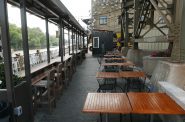 Jul 26th, 2023 by Michael Horne
Jul 26th, 2023 by Michael Horne
-
How Falcon Bowl Was Saved
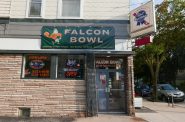 Jul 12th, 2023 by Michael Horne
Jul 12th, 2023 by Michael Horne
-
Clementines Evokes the New Bay View
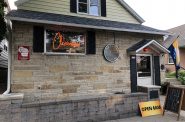 Sep 19th, 2022 by Michael Horne
Sep 19th, 2022 by Michael Horne


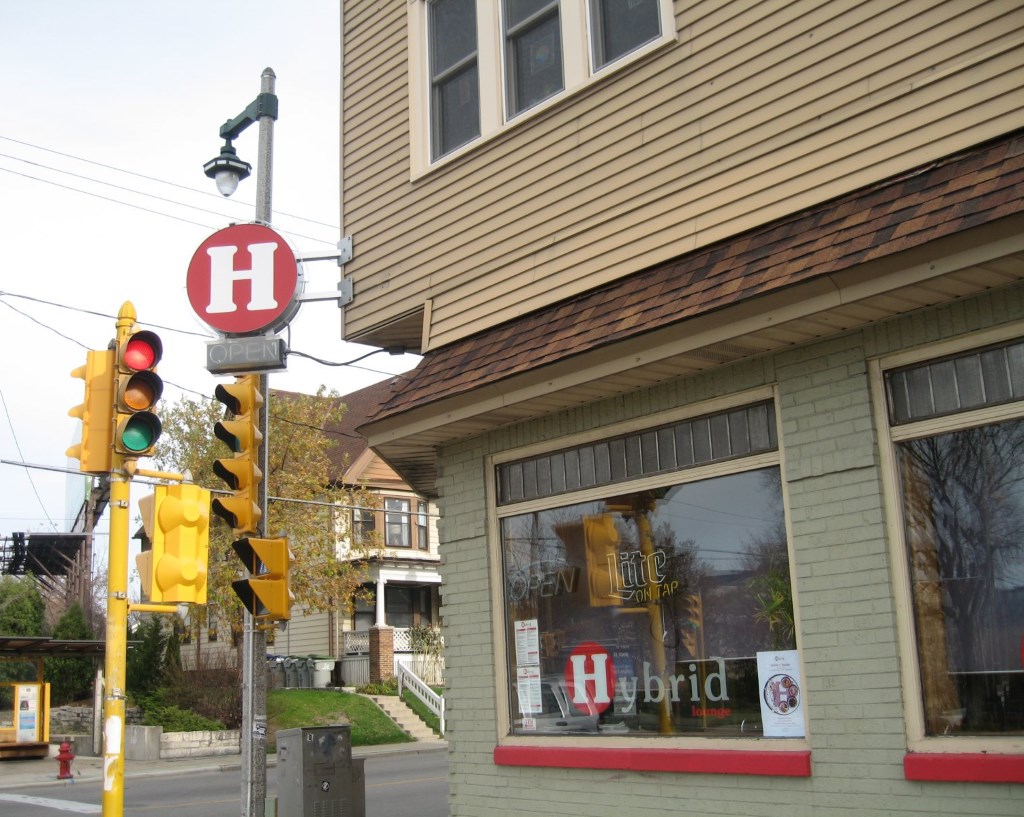
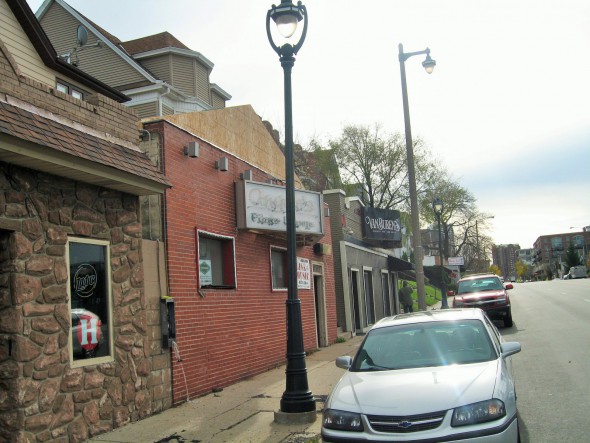
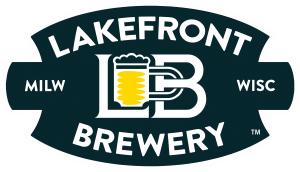
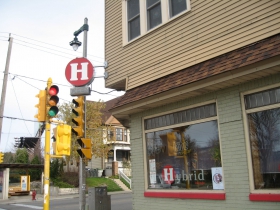
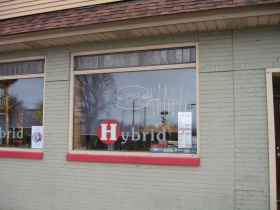
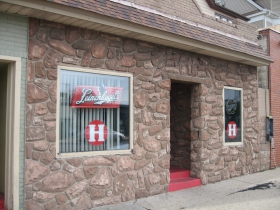
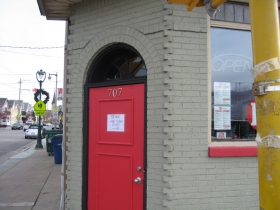
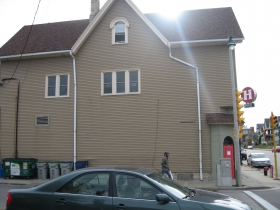
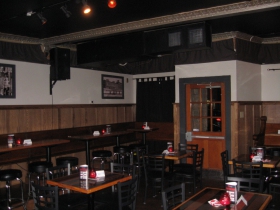
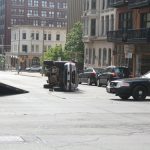












Hybrid is conveniently in my neighborhood, and was enchanting and crowded (especially on the dance floor), on Halloween. Thanks for the lively history and research, Michael Horne!